Marwari Wedding
Marwaris hail from the region of Marvad, modern-day Jodhpur region, in southwestern Rajasthan. Wealthy and prosperous, weddings within the Marwari community are expensive affairs with celebrations for days. Marwari marriages are very traditional when it involves customs and rituals. These weddings are also very grand and colourful. Marwari or Rajasthani weddings are strong rooted in culture and tradition, then have a stunning heritage quality about them that’s worth knowing about. The week-long wedding affair is an elaborate, regal and vibrant and colourful affair. With their colourful wedding attires, grand music and exotic cuisines, you get the sensation of attending a true majestic wedding. Typical Marwari weddings have elaborate pre-wedding, wedding and post-wedding rituals that are very interesting and full of fun. Read on to urge a better check out the marriage customs and rituals. The Marwari marriage rituals start with a week-long wedding occasions, vibrant and amazing to experience.
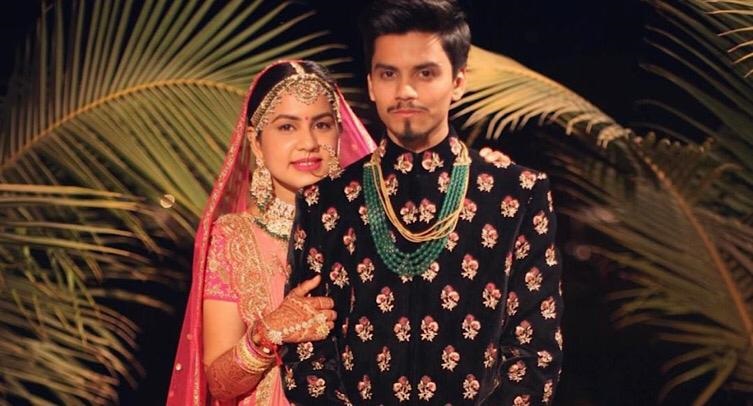
PRE WEDDING RITUALS
Roka Ceremony
A Roka ceremony is one among the earliest Marwari wedding traditions that happens a couple of months before the marriage date. Parents from both families perform Tilak as a blessing to the bride and therefore the groom then they exchange gifts. It's usually a home affair.
Byah Haath
Byah Haath usually starts 7 to 10 days before the Marwari Wedding. This is a ritual which takes place at the respective houses of both the bride and therefore the groom. Ladies within the family gather together to sing songs of purity and happiness, which are popularly referred to as ‘Mangal Geet’ within the Rajasthani language. This ceremony usually includes married women called ‘suhagins’ who bless the bride/groom who is getting married.
Ganapati Sthapana
A couple of days before the marriage , both the bride and therefore the groom’s family observe this ritual by putting the Idol of Lord Ganesh on a sacred pedestal during a process known as Ganapati Sthapana.
Griha Shanti
Along with Ganapati Sthapana, a puja or havan or holy worshipping ritual is performed at both families’ houses by priests to bless the couple.
Pithi Dastoor
Pithi Dastoor refers to Haldi ceremony in other cultures. A paste of turmeric, sandalwood and sometimes besan is applied to both the bride and groom mentioned as Pithi for a healthy skin. The same rituals are followed at the groom’s place. After the Pithi Dastoor, neither the bride nor the groom is allowed to go away the house till the marriage day.
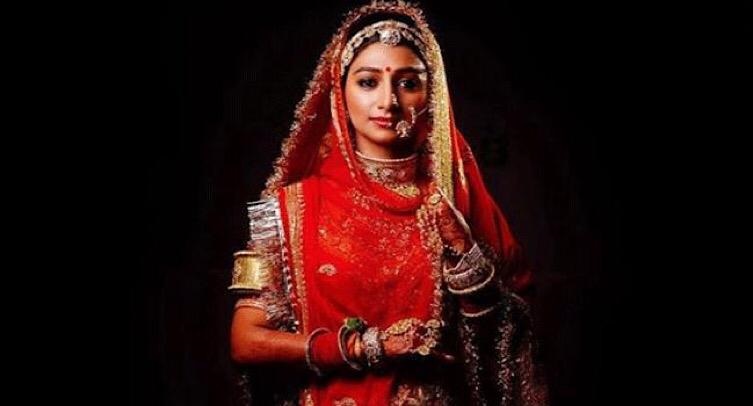
Mehndi Ceremony
The Mehndi is considered as a Shagun for the bride. One unique Marwari wedding tradition is that along with the bride, the groom must apply Mehndi on his hands too.
Mahira Dastoor
Typically as per Marwari wedding traditions, the role of the maternal uncle and aunt is very significant. In a Mahira Dastoor, the bride and groom's Mama-Mami bless them with gifts, money , and garments .
Palla Dastoor
As per the Palla Dastoor, members from the groom's family gift the bride and her family with clothes, jewellery, sweets, fruits and thus the likes wrapped in beautiful trousseau trays. The bride is supposed to wear the same clothes & jewellery at the wedding occasion.
Mehfil
As per the Marwari wedding traditions, the Mehfil is an all-men Bachelor’s party and an all-women Bachelorette party, happening separately in their decided place. The groom, his groomsmen and every one the opposite men share jokes, drink, enjoy Rajasthani ethnic music and dance performances all night long before the D-day.
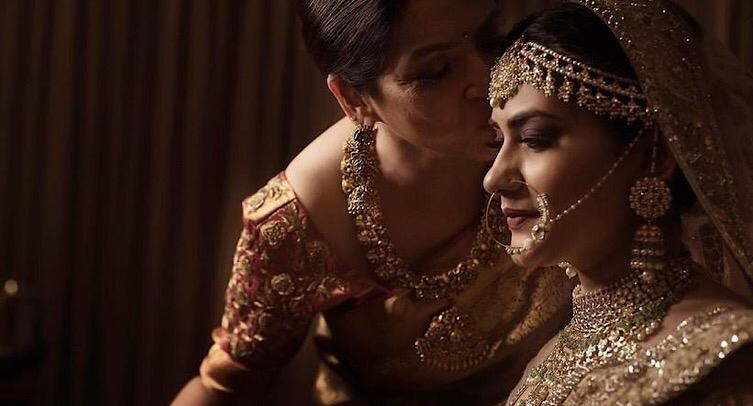
WEDDING DAY RITUALS
Nikasi & Baraat
In Nikasi the husband of the groom's sister lovingly decks up with safa and then applies a kajal dot on his face and ties a golden thread on the mare to ward off evil. The Baraat or the groom's procession is then able to head towards the marriage venue. People dance and sing with the mare accompanying the groom.
Toran & Baraat Dhukaav
The entrance of the bride’s home is elaborately decorated with toran. The groom has got to hit the toran with a stick from a neem before entering the bride's place, which is believed to keep off any negative energy. Then the mother of the bride welcomes the groom at the doorstep with an aarti, tilak on his forehead with sweets and flower.
Jaimala & Granthibandhan
Once the bride is brought to the mandap, the bride and groom meet they exchange flower garlands, which is Jaimala. After the ceremony, Granthibandhan is performed. One end of the bride's veil is tied with an end of the groom's waistcloth to make a knot. This cloth is then placed at the groom's shoulder. This whole ritual signifies the union of the couple which are going to be married.
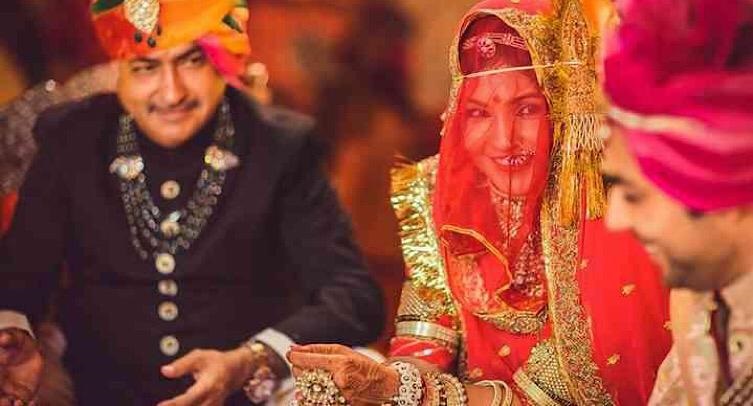
Kanyadaan and Paanigrahan
This is the moment when the father of the bride gives away his daughter to the groom to her husband and asks him to take her responsibility and care for her. Similarly, the bride is asked to accept the groom's family and his surname. Then the bride holds the groom’s fork over which water is poured, which is named Paanigrahan.
Phere & Ashwaroham
Just like other Hindu wedding traditions, the couple takes seven rounds around the holy fire seven times in a Saptapadi while chanting mantras together. With each round, the bride has got to push a grinding stone together with her toe which signifies the avoiding challenges faraway from their lives. After this, the brother of the bride offers her a couple of cold cereal that the bride and therefore the groom together need to offer to the hearth .
Vamang Sthapana
After the completion of the pheras, the bride sits on the left side of her groom. As the human heart is situated on the left of the body, similarly it signifies that the groom is accepting and establishing his wife in his heart and soul.
Sindoor Daan
This is considered very auspicious and signifies the completion of the wedding. From now on the bride wears sindoor as a mark of her being a wife .
Aanjhala
The father of the groom drops a bag of cash at the lap of the bride. This ritual signifies welcoming the bride into her in-laws’ family and also making her conscious of her duty and responsibility towards her new home.
Paharavani
As per a Paharavani, the groom has got to sit on a replacement cloth and therefore the bride’s family showers him with gifts. Both the families and therefore the priests bless the new couple for a prosperous future. The bride pays reference to her father's home and performs a Puja at the edge . Finally, she breaks an earthen pot symbolising a break from her paternal family and starts a new family with her husband.
Sir Guthhi & Sajjan Goth
After an extended tiring day of the marriage , an elderly lady of the house combs bride's hair washes her face to freshen her up. That's a Sir Guthhi. An elaborate Marwari traditional meal is arranged by the bride's family. This meal is personally served by the bride's father and other male members of the family. Dal Baati Choorma, Gatta curry, Gatta Pulav are some of the most menus.
Jua Khilai & Bidaai
Jua Khilai takes place subsequent morning at the bride's house. It involves tons of fun wedding games that sometimes the Mami of the bride arranges. A half-dried coconut crammed with coins and sugar is handed to the bride which she later gives to her mother-in-law. The bride’s parents send off their daughter to her new home. A coconut is broken by the car wheels which is taken into account as an honest omen.
Post Wedding rituals
Grihapravesh
The bride is welcomed to her new family. First, her sisters-in-law guard the entrance in jest and ask for some gifts and bribe to let the couple in. The groom's aunt then performs Aarti and welcomes her home. The bride has got to topple down a jar filled with rice together with her foot, dip her feet into a red dye and walk inside the house leaving red footprints. The bride is then asked to the touch ghee and jaggery then a bag crammed with money signifying prosperity and harmony within the family. The couple is then asked to light a lamp in their house temple and offered sweets.
Pagelagni
Finally, an elderly lady flies the bride's veil and that is when everyone blesses the couple. The bride is formally introduced to all or any the relations and she or he touches their feet for blessings, which is understood as Pagelagni.
Wedding Reception
Marwari wedding receptions are usually held each day after the wedding ceremony. Traditional Marwari food is served at this function strictly consisting of a vegetarian menu and no alcohol is served.
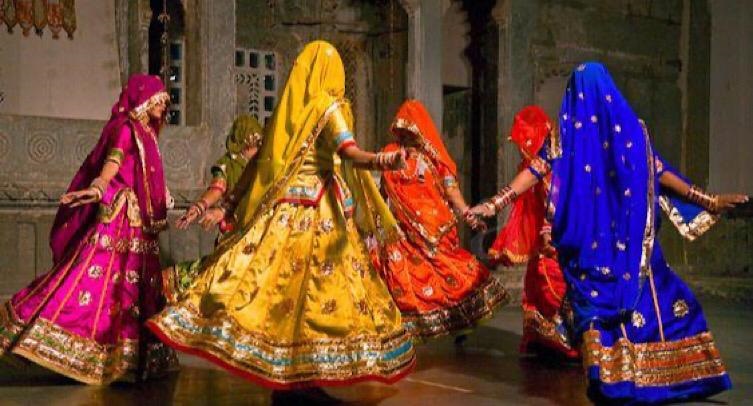
#ShaadiBag #indianwedding #marwariwedding #indianrituals #marwarirituals #indiatradition #marwaritradition #traditionalwedding #shaadibagevent #weddingday #beautifuldulhan #handsomedulha #wedding #weddingrituals #groom #bride #beautifulwedding #marwari #jaimala #phere #postweddingrituals #marwaripostweddingrituals #nikasi #welcomingofbride #sindoordaan #pagelagni #grihpravesh
Author
Khushi Masarani
Published on : 07-Dec-2020 | By Admin
Recent Reviews
0.00 / 5
Marwaris hail from the region of Marvad, modern-day Jodhpur region, in southwestern Rajasthan. Wealthy and prosperous, weddings within the Marwari community are expensive affairs with celebrations for days. Marwari marriages are very traditional when it involves customs and rituals. These weddings are also very grand and colourful. Marwari or Rajasthani weddings are strong rooted in culture and tradition, then have a stunning heritage quality about them that’s worth knowing about. The week-long wedding affair is an elaborate, regal and vibrant and colourful affair. With their colourful wedding attires, grand music and exotic cuisines, you get the sensation of attending a true majestic wedding. Typical Marwari weddings have elaborate pre-wedding, wedding and post-wedding rituals that are very interesting and full of fun. Read on to urge a better check out the marriage customs and rituals. The Marwari marriage rituals start with a week-long wedding occasions, vibrant and amazing to experience.

PRE WEDDING RITUALS
Roka Ceremony
A Roka ceremony is one among the earliest Marwari wedding traditions that happens a couple of months before the marriage date. Parents from both families perform Tilak as a blessing to the bride and therefore the groom then they exchange gifts. It's usually a home affair.
Byah Haath
Byah Haath usually starts 7 to 10 days before the Marwari Wedding. This is a ritual which takes place at the respective houses of both the bride and therefore the groom. Ladies within the family gather together to sing songs of purity and happiness, which are popularly referred to as ‘Mangal Geet’ within the Rajasthani language. This ceremony usually includes married women called ‘suhagins’ who bless the bride/groom who is getting married.
Ganapati Sthapana
A couple of days before the marriage , both the bride and therefore the groom’s family observe this ritual by putting the Idol of Lord Ganesh on a sacred pedestal during a process known as Ganapati Sthapana.
Griha Shanti
Along with Ganapati Sthapana, a puja or havan or holy worshipping ritual is performed at both families’ houses by priests to bless the couple.
Pithi Dastoor
Pithi Dastoor refers to Haldi ceremony in other cultures. A paste of turmeric, sandalwood and sometimes besan is applied to both the bride and groom mentioned as Pithi for a healthy skin. The same rituals are followed at the groom’s place. After the Pithi Dastoor, neither the bride nor the groom is allowed to go away the house till the marriage day.

Mehndi Ceremony
The Mehndi is considered as a Shagun for the bride. One unique Marwari wedding tradition is that along with the bride, the groom must apply Mehndi on his hands too.
Mahira Dastoor
Typically as per Marwari wedding traditions, the role of the maternal uncle and aunt is very significant. In a Mahira Dastoor, the bride and groom's Mama-Mami bless them with gifts, money , and garments .
Palla Dastoor
As per the Palla Dastoor, members from the groom's family gift the bride and her family with clothes, jewellery, sweets, fruits and thus the likes wrapped in beautiful trousseau trays. The bride is supposed to wear the same clothes & jewellery at the wedding occasion.
Mehfil
As per the Marwari wedding traditions, the Mehfil is an all-men Bachelor’s party and an all-women Bachelorette party, happening separately in their decided place. The groom, his groomsmen and every one the opposite men share jokes, drink, enjoy Rajasthani ethnic music and dance performances all night long before the D-day.

WEDDING DAY RITUALS
Nikasi & Baraat
In Nikasi the husband of the groom's sister lovingly decks up with safa and then applies a kajal dot on his face and ties a golden thread on the mare to ward off evil. The Baraat or the groom's procession is then able to head towards the marriage venue. People dance and sing with the mare accompanying the groom.
Toran & Baraat Dhukaav
The entrance of the bride’s home is elaborately decorated with toran. The groom has got to hit the toran with a stick from a neem before entering the bride's place, which is believed to keep off any negative energy. Then the mother of the bride welcomes the groom at the doorstep with an aarti, tilak on his forehead with sweets and flower.
Jaimala & Granthibandhan
Once the bride is brought to the mandap, the bride and groom meet they exchange flower garlands, which is Jaimala. After the ceremony, Granthibandhan is performed. One end of the bride's veil is tied with an end of the groom's waistcloth to make a knot. This cloth is then placed at the groom's shoulder. This whole ritual signifies the union of the couple which are going to be married.

Kanyadaan and Paanigrahan
This is the moment when the father of the bride gives away his daughter to the groom to her husband and asks him to take her responsibility and care for her. Similarly, the bride is asked to accept the groom's family and his surname. Then the bride holds the groom’s fork over which water is poured, which is named Paanigrahan.
Phere & Ashwaroham
Just like other Hindu wedding traditions, the couple takes seven rounds around the holy fire seven times in a Saptapadi while chanting mantras together. With each round, the bride has got to push a grinding stone together with her toe which signifies the avoiding challenges faraway from their lives. After this, the brother of the bride offers her a couple of cold cereal that the bride and therefore the groom together need to offer to the hearth .
Vamang Sthapana
After the completion of the pheras, the bride sits on the left side of her groom. As the human heart is situated on the left of the body, similarly it signifies that the groom is accepting and establishing his wife in his heart and soul.
Sindoor Daan
This is considered very auspicious and signifies the completion of the wedding. From now on the bride wears sindoor as a mark of her being a wife .
Aanjhala
The father of the groom drops a bag of cash at the lap of the bride. This ritual signifies welcoming the bride into her in-laws’ family and also making her conscious of her duty and responsibility towards her new home.
Paharavani
As per a Paharavani, the groom has got to sit on a replacement cloth and therefore the bride’s family showers him with gifts. Both the families and therefore the priests bless the new couple for a prosperous future. The bride pays reference to her father's home and performs a Puja at the edge . Finally, she breaks an earthen pot symbolising a break from her paternal family and starts a new family with her husband.
Sir Guthhi & Sajjan Goth
After an extended tiring day of the marriage , an elderly lady of the house combs bride's hair washes her face to freshen her up. That's a Sir Guthhi. An elaborate Marwari traditional meal is arranged by the bride's family. This meal is personally served by the bride's father and other male members of the family. Dal Baati Choorma, Gatta curry, Gatta Pulav are some of the most menus.
Jua Khilai & Bidaai
Jua Khilai takes place subsequent morning at the bride's house. It involves tons of fun wedding games that sometimes the Mami of the bride arranges. A half-dried coconut crammed with coins and sugar is handed to the bride which she later gives to her mother-in-law. The bride’s parents send off their daughter to her new home. A coconut is broken by the car wheels which is taken into account as an honest omen.
Post Wedding rituals
Grihapravesh
The bride is welcomed to her new family. First, her sisters-in-law guard the entrance in jest and ask for some gifts and bribe to let the couple in. The groom's aunt then performs Aarti and welcomes her home. The bride has got to topple down a jar filled with rice together with her foot, dip her feet into a red dye and walk inside the house leaving red footprints. The bride is then asked to the touch ghee and jaggery then a bag crammed with money signifying prosperity and harmony within the family. The couple is then asked to light a lamp in their house temple and offered sweets.
Pagelagni
Finally, an elderly lady flies the bride's veil and that is when everyone blesses the couple. The bride is formally introduced to all or any the relations and she or he touches their feet for blessings, which is understood as Pagelagni.
Wedding Reception
Marwari wedding receptions are usually held each day after the wedding ceremony. Traditional Marwari food is served at this function strictly consisting of a vegetarian menu and no alcohol is served.

#ShaadiBag #indianwedding #marwariwedding #indianrituals #marwarirituals #indiatradition #marwaritradition #traditionalwedding #shaadibagevent #weddingday #beautifuldulhan #handsomedulha #wedding #weddingrituals #groom #bride #beautifulwedding #marwari #jaimala #phere #postweddingrituals #marwaripostweddingrituals #nikasi #welcomingofbride #sindoordaan #pagelagni #grihpravesh
Author
Khushi Masarani